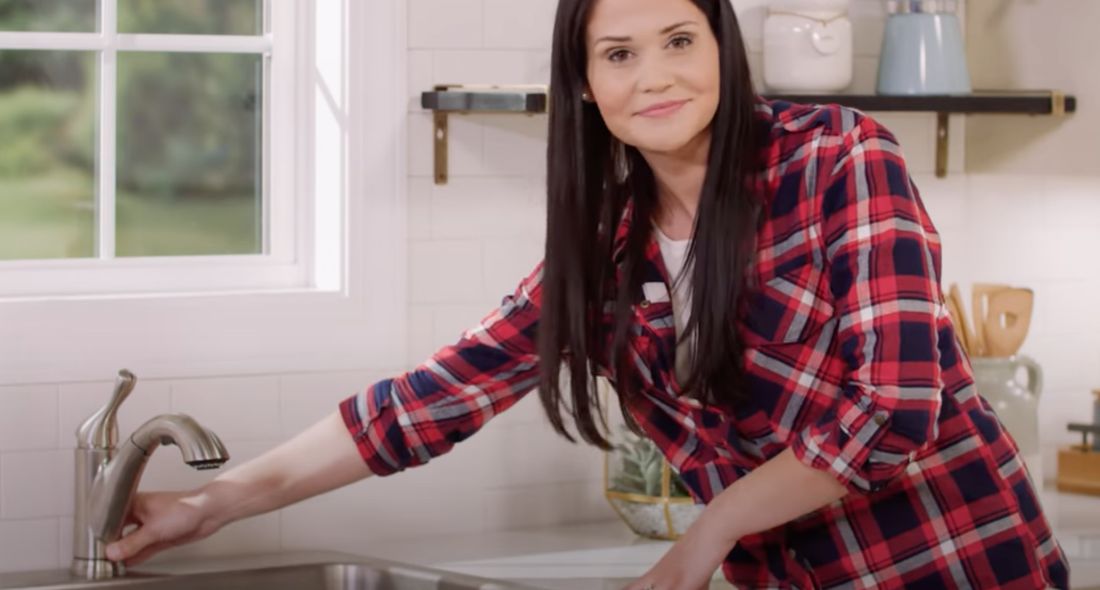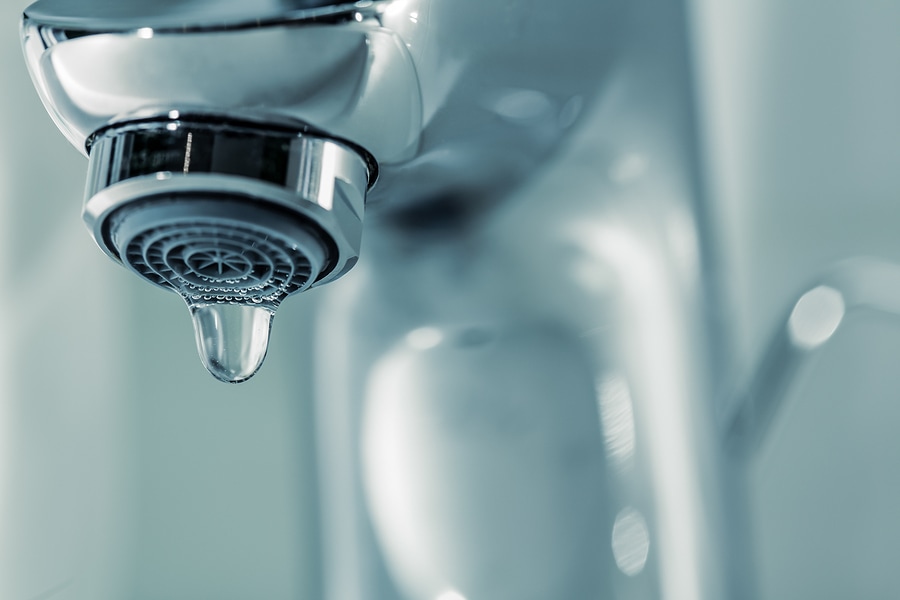An Explanations Behind Correcting a Dripping Faucet
An Explanations Behind Correcting a Dripping Faucet
Blog Article
The article which follows in relation to Should I Repair or Replace a Leaky Faucet? is incredibly enlightening. Don't bypass it.

Leaking faucets could look like a minor inconvenience, but their effect exceeds just the annoyance of the sound. From drainage to sustaining unneeded monetary costs and health and wellness risks, ignoring a leaking tap can lead to numerous effects. In this post, we'll look into why it's critical to resolve this common home issue without delay and properly.
Wastage of Water
Ecological Impact
Leaking faucets contribute considerably to water wastefulness. According to the Environmental Protection Agency (EPA), a solitary tap dripping at one drip per secondly can waste more than 3,000 gallons of water annually. This not just strains water resources but additionally impacts ecosystems and wildlife depending on them.
Financial Prices
Boosted Water Costs
Past the ecological impact, leaking taps can blow up water costs significantly. The collected wastefulness in time equates right into greater utility expenditures, which could have been stayed clear of with timely fixings.
Possible Building Damage
Furthermore, extended trickling can lead to damage to fixtures and surfaces bordering the faucet. Water build-up can trigger staining, corrosion, and even structural concerns if left ignored, causing additional repair service prices.
Health Problems
Mold and Mildew Development
The consistent presence of wetness from a leaking faucet produces an optimal setting for mold and mildew and mold growth. These fungis not just compromise indoor air quality however additionally present health and wellness threats, particularly for people with breathing problems or allergic reactions.
Waterborne Conditions
Stagnant water in leaking taps can become a breeding ground for germs and other microorganisms, boosting the threat of waterborne diseases. Pollutants such as Legionella germs flourish in stagnant water, potentially leading to severe illnesses when ingested or breathed in.
Do it yourself vs. Specialist Repair
Pros and Cons of Do It Yourself Fixing
While some might attempt to take care of a leaking faucet themselves, DIY fixings come with their very own collection of obstacles. Without proper knowledge and tools, DIY attempts can worsen the problem or cause incomplete repair services, prolonging the issue.
Advantages of Working With a Specialist Plumber
Working with a professional plumber makes certain that the underlying cause of the dripping faucet is dealt with efficiently. Plumbers have the knowledge and devices to diagnose and repair tap issues successfully, conserving time and decreasing the danger of more damage.
Step-by-Step Overview to Dealing With a Dripping Faucet
Devices Required
Prior to attempting to fix a trickling tap, collect the essential tools, including an adjustable wrench, screwdrivers, replacement parts (such as washing machines or cartridges), and plumber's tape.
Common Faucet Issues and Their Solutions
Determine the type of tap and the particular issue triggering the drip. Typical issues include worn-out washers, corroded valve seats, or faulty O-rings. Describe supplier guidelines or on-line tutorials for step-by-step assistance on repairs.
Safety nets
Regular Upkeep Tips
To prevent trickling faucets, perform routine upkeep such as cleaning up aerators, checking for leakages, and changing damaged parts without delay. In addition, consider installing water-saving gadgets or updating to extra reliable components.
Importance of Prompt Services
Resolving leaking taps as soon as they're observed stops more water waste and possible damages, eventually saving both water and money in the future.
Influence On Residential Or Commercial Property Worth
Perception of Well-Maintained Residential Or Commercial Property
Keeping a property in good condition, consisting of attending to upkeep concerns like trickling faucets, enhances its viewed worth and value among potential buyers or occupants.
Impact on Resale Value
Characteristics with well-maintained plumbing components, including taps, command greater resale worths in the real estate market. Resolving trickling faucets can contribute to a positive impression throughout home examinations and negotiations.
Ecological Responsibility
Private Payment to Conservation
Taking duty for fixing trickling taps aligns with broader initiatives towards water preservation and environmental sustainability. Every individual's activities collectively make a significant influence on preserving priceless resources.
Lasting Living Practices
By prioritizing prompt repairs and adopting water-saving practices, people contribute to sustainable living techniques that benefit both present and future generations.
Verdict
Attending to a trickling tap goes beyond mere convenience; it's an important action toward conserving water, minimizing economic costs, and securing health and wellness and home. Whether via DIY repairs or expert help, doing something about it to deal with dripping taps is a little yet impactful way to advertise liable stewardship of sources and contribute to a much healthier, a lot more sustainable future.
How to Fix a Leaky Faucet: Step-by-Step Repair Guide
A leaky faucet may seem like a simple annoyance, but if it's not fixed promptly, that leak could cost hundreds to potentially thousands. From water damage to mold, mildew, and high water bills, even a tiny leak can be catastrophic if left unattended. Damage like this can even affect the overall value of your home, so it's important to take the right approach for leaky faucet repair. You may need the help of a plumber in some cases, but we've got a few tips you can try on how to fix a leaky faucet before calling the pros.
Four Faucet Types
When you're learning how to fix a leaky faucet, the first step is knowing what kind of faucet you're working with! There are four common types.
Cartridge Faucets
Cartridge faucets come in one- or two-handled varieties. In one-handled cartridge faucets, hot and cold water combines in a single cartridge. In the two-handled versions, hot and cold water are controlled separately and mixed in the faucet.
Ball Faucets
Ball faucets have a single lever you push up and down to adjust the pressure and rotate to change the temperature. A slotted metal ball controls the amount of water allowed into the spout.
Compression Washer Faucets
They're the oldest type of faucet, but they're still used in many homes — especially older ones. Compression faucets have two separate handles that, when turned, raise or lower the washer that seals a water valve. This valve stops water from flowing through the faucet when it is turned off.
Disc Faucets
Disc faucets rarely need to be repaired due to their maintenance-free design. The water flow is controlled by two discs — the upper one raises and lowers against a fixed lower disc, creating a watertight seal. If your disc faucet starts leaking, you may need to replace the seals or clean residue buildup from the inlets.
Fixing a Leaky Faucet
Step 1: Turn Off the Water
Whether you're learning how to fix a leaky bathtub faucet or how to fix a leaky kitchen faucet, always turn off the water supply to your working area when you're fixing a leak. The last thing you want is a flood added to your list of things to fix.
Look for the shutoff valves below your sink or around the tub and turn them clockwise to stop the water flow. If your faucet doesn't have shutoff valves, you may need to turn off the water for the whole house. Check to make sure it's off by turning the faucet on. If nothing comes out, you're ready to start the repair.
Step 2: Take Apart the Faucet
How you disassemble your faucet depends on the type of fixture you have. You can use a flathead screwdriver to remove the caps on top of the handle or handles for cartridge and compression faucets. Inside, you should see handle screws. Unscrew these with a screwdriver to remove the handle.
Disc- and ball-style faucets will typically have an inlet screw near the handle, and removing that will reveal the interior of the faucet.
Detach the Valve Stem
For cartridge- and compression-style faucets, you'll see the inner valve stem or cartridge once you remove the faucet handles. If you have a compression faucet, unscrew the brass valve stem. If you have a cartridge faucet, pull out the cartridge. If your cartridge has been in place for a while, it may require some tools or extra force to remove it due to mineral deposits.
Examine and Replace Parts
Once you've removed the parts, check them out to confirm what needs to be replaced. You may see corroded rubber washers, O-rings, stems, or cartridges. On a ball-style faucet, check the seats and springs for damage.
If you need to repair a leaky disc faucet, check the inlet and seals on the lower disc.
Once you determine what parts must be replaced, visit your local hardware store. Bring the damaged parts with you to ensure you can purchase the correct components to replace them.
Clean Valves and Faucet Cavity
If you've removed a stem or cartridge, you may notice mineral buildup in the faucet's threads. Use white vinegar to clean the valve seat by soaking it for a few minutes, then scrub it away with a soft toothbrush and rinse with warm water. You can also clean the interior of the faucet in the same way.
Reassemble the Faucet
Once your faucet is cleaned and the required parts have been replaced, it's time to reassemble it. Put the pieces back together and slowly turn the water supply back on. Doing this slowly is crucial because too much initial water pressure can damage the new hardware you've just installed.
https://homewarranty.firstam.com/blog/how-to-fix-leaky-faucet

As a devoted reader on How to Fix a Dripping or Leaky Faucet , I think sharing that piece of content was sensible. Enjoyed reading our posting? Please share it. Help somebody else discover it. Thank you for your time. Return soon.
Report this page